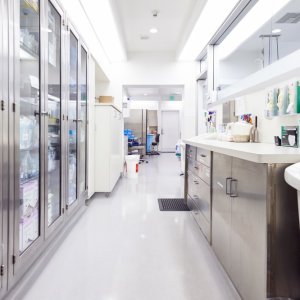
Providers Call for Action Against Nosocomial Infections
 By Miriam Bello | Senior Journalist and Industry Analyst -
Wed, 10/27/2021 - 14:33
By Miriam Bello | Senior Journalist and Industry Analyst -
Wed, 10/27/2021 - 14:33
Several care providers are introducing innovative solutions to fight nosocomial infections, which are a large, common problem for hospitals across the world.
Nosocomial infections, also known as healthcare-associated infections, are those acquired while receiving healthcare that were not present at the time of admission to a care facility, describes StatPearls’ authors Anna Sikora and Farah Zahra. “The thing with these kinds of infections, which are born in hospitals, is that they are killing more people than prostate and breast cancer combined,” explained José Léon, Co-founder of Aidy Technology to MBN. These infections may occur in different areas of healthcare delivery, such as hospitals, long-term care facilities and ambulatory settings and may also appear after discharge.
Nosocomial infections are often caused by multidrug-resistant pathogens acquired via invasive procedures. They can follow excessive or improper antibiotic use or a failure to follow infection control and prevention procedures. For instance, Suria González, Infectologist of bioMérieux, explained to MBN that “pneumonia is one of the most common nosocomial infections that cause sepsis.”
These infections prolong hospital stays between 5.9 and 9.6 days and increases the probability of dying by up to 6.9 percent, according to Hospitales Sin Infecciones. This implies that hospital expenses increase, generating a significant economic burden for health systems, patients and their families.
The incidence of nosocomial infections in Mexico is difficult to determine because, as Hospitales Sin Infecciones explains, despite what the official Mexican standard (NOM-045-SSA2-2005) dictates less than 10 percent of hospital units throughout the country periodically report the incidence of hospital associated infections. Lax measures of compliance make it difficult “to know whether nosocomial infections related to surgeries are due to instrument-related processes,” Jon Olabarrieta, Regional Director Latin America and Spain Belimed, told MBN.
The Ministry of Health reported that, on average, patients who presented hospital associated infections remained hospitalized for 21.5 days and almost 20 percent were discharged due to death.”
Actions to fight nosocomial infections come from different fronts. On one hand, hospitals are already finding ways to reinforce safety. “Numerous measures stand out, including protocols for disinfection, new management procedures to dispose of infectious waste and new care processes that ensure patient safety,” said Javier Potes, Director General of Mexican Hospital Consortium (CMH) to MBN. The consortium is also working on a program called Causa, which focuses on providing safe care inside the hospital. “As part of this program, we are measuring the number of infections related to intravenous catheters,” said Potes.
On the other hand, innovation and tech are responding through software platforms, such as Aidy Technologies, which provide real-time feedback and statistics about hand-washing practices in hospitals to reduce nosocomial infections. Aidy Technologies aims to use technology to promote hand hygiene. “Our platform is built to change behavior by providing real-time feedback on hand-washing practices, as well as opportune statistics that show in which areas there is a need for more training,” said León.
















